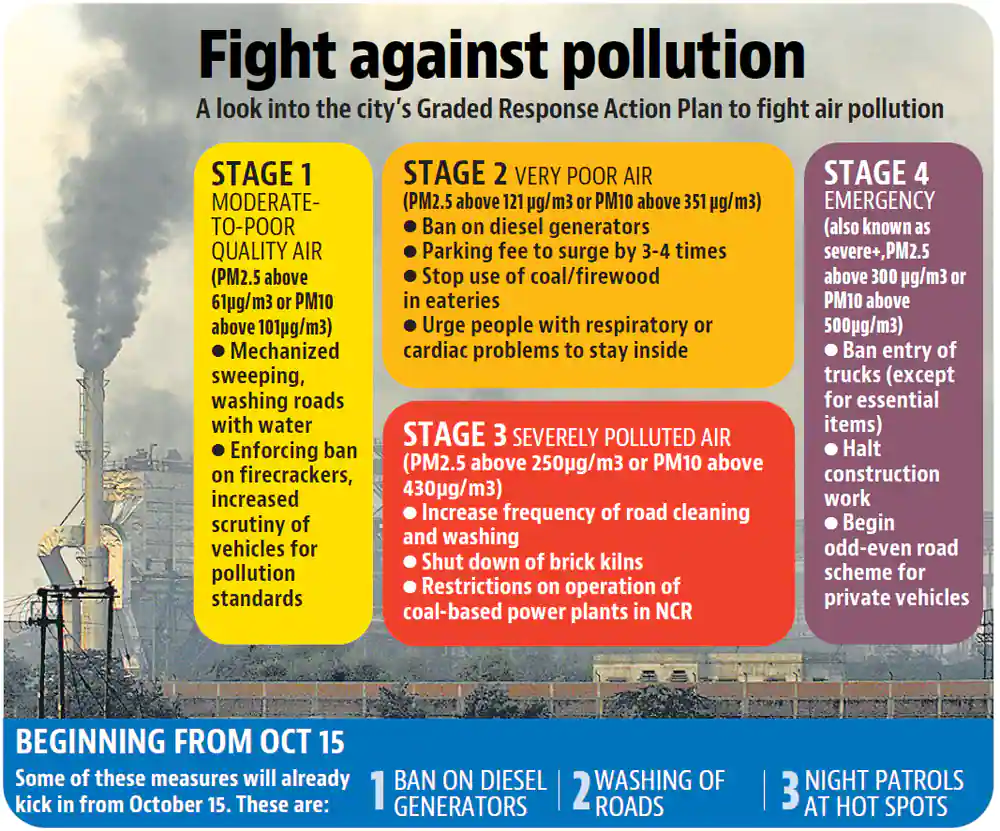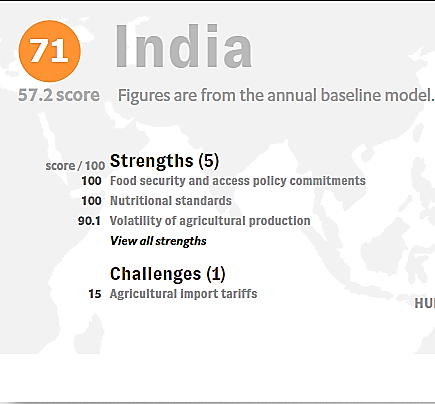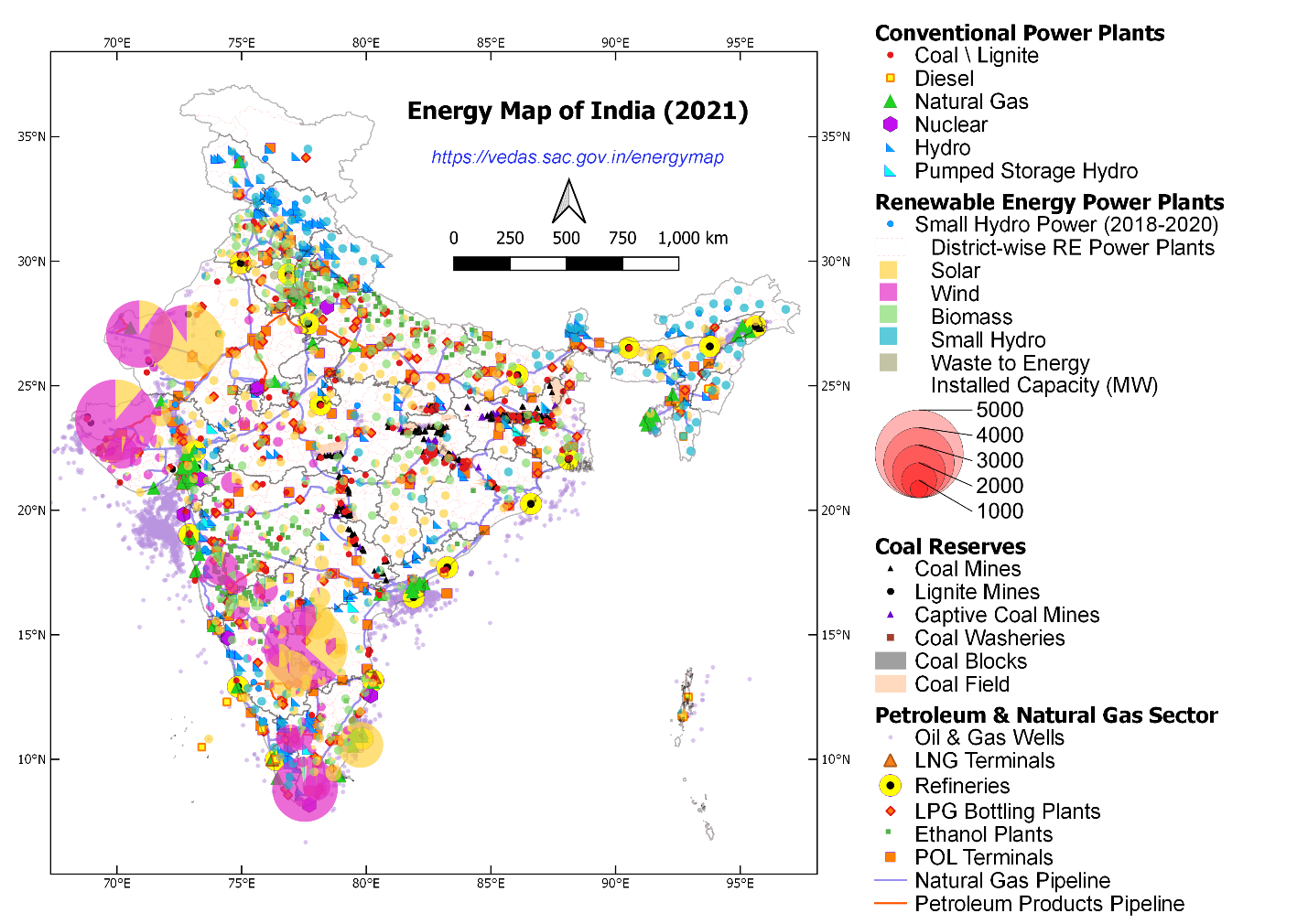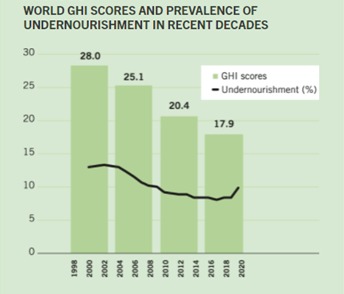Monday, 25th October 2021
Rules to help renewable energy producers
In News
Power Ministry has certified new rules for power supply from renewable energy to boost the use of renewable energy.
About the News
- Aim of the Rules: The Ministry of Power has announced new rules to sustain economic viability of the sector, ease financial stress of various stakeholders and ensure timely recovery of costs involved in electricity generation.
- The rules also aim for the promotion of clean energy to meet the India's commitment towards climate change.
- Concerns Addressed: Investors and other stakeholders in the power sector had been concerned about the timely recovery of the costs due to change in law, curtailment of renewable power and other related matters.
- A formula has been provided to calculate adjustment in the monthly tariff due to the impact of change in Law.
- A number of states had also sought to cut procurement from renewables or renegotiate power purchase agreements (PPAs).
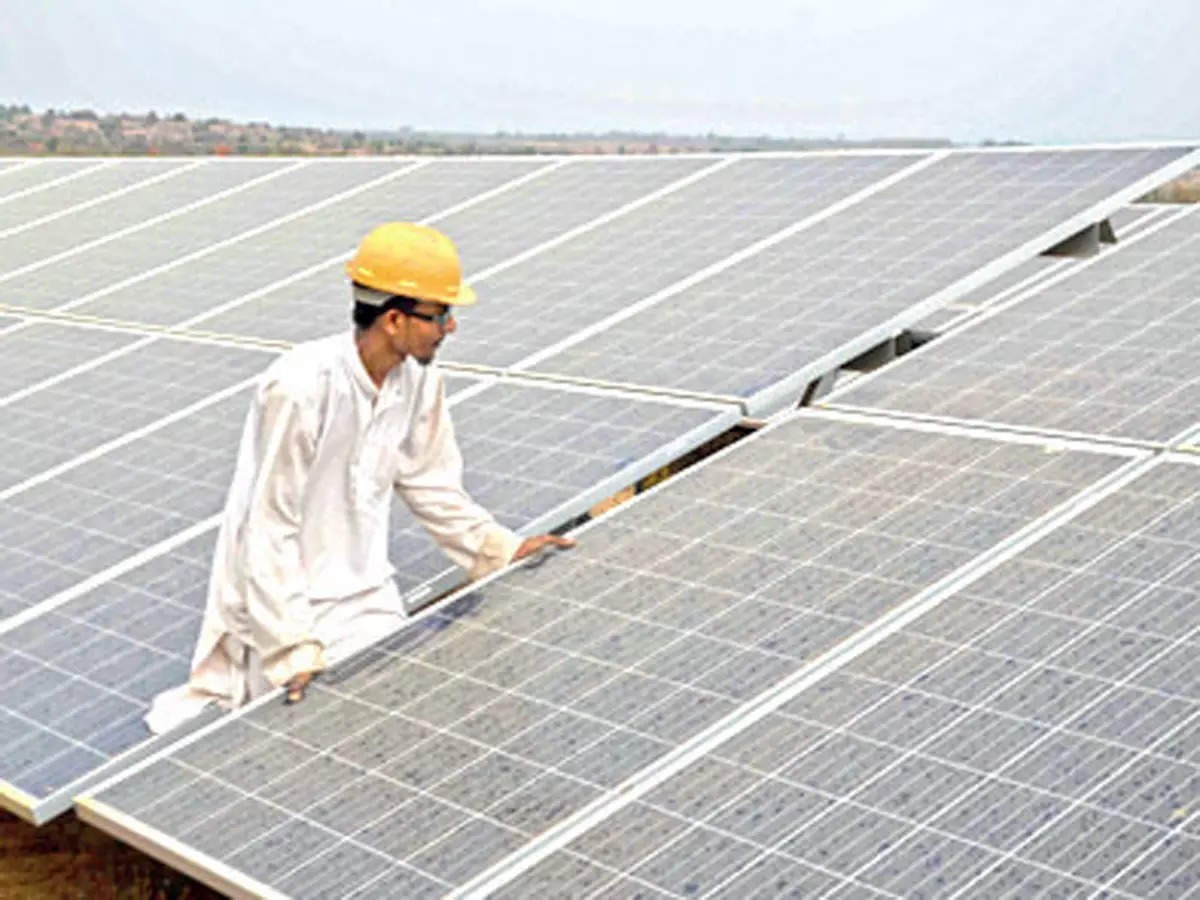
About the Rules
- The rules are notified by the Ministry of Power under Electricity Act, 2003.
- Two Rules Notified –
- Electricity (Timely recovery of costs due to Change in Law) Rules, 2021.
- Electricity (Promotion of generation from renewable sources of energy by addressing Must Run and other matters) Rules, 2021.
- Must run status: The rules provide that electricity supply from must-run plants can only be curtailed in the event of technical constraints in the electricity grid or for reasons of security of the grid
- Electricity (Promotion of generation from renewable sources of energy by addressing Must Run and other matters) Rules, 2021 classify solar, wind and hydro plants (in case of excess water leading to spillage) as “must-run” plants.
- Event of a curtailment: In the event of curtailment supply from a must-run power plant, compensation shall be payable by the procurer to the must-run power plant at the rates specified in the agreement for purchase or supply of electricity.
- For curtailment or regulation of power, the provisions of the Indian Electricity Grid Code shall be followed.
- Selling of Power: The RE generator is also allowed to sell power in the power exchange and recover the cost suitably. This helps in realisation of revenue by the generator and also the power is available in the electricity grid for use of consumers.
- Intermediary for procurement: The rules provide for the intermediary procurer to procure electricity for distribution licensees.
- The intermediary procurer will be an agency nominated by the central government or state government.
- The electricity may be procured through transparent process of bidding.
- The guidelines for bidding have been issued by the central government under section 63 of Electricity Act, 2003.
Benefits of Passing the Rule
- Investment friendly environment Timely recovery of the costs due to change in law is very important as the investment in the power sector largely depends upon the timely payments.
- At present the pass through under change of law takes time. This impacts the viability of the sector and the developers get financially stressed. The rules would help in creating investment friendly environment in the country.
- Energy Transition: These rules will help in achieving the targets of RE generation. India has also made commitments to bring about energy transition.
- India has also announced international commitment to set up 175 GW of RE capacity by 2022 and 450 GW by 2030.
Sources:
Counter-terror challenges
In News
Recently, nine Army personnel were killed during counter-terrorism operation in Mendhar area of Poonch.
About the News
- Background: Security establishment have been facing multi-dimensional challenges in areas to the south of the Pir Panjal region in J&K as militants have repeatedly tried to circumvent fencing to infiltrate and have also been successful at times.
- The Area of Pir Panchal: The area south of Pir Panjal divides the Kashmir valley from the Jammu region.
- It extends from the Jammu-Samba-Kathua plains to the hilly Rajouri-Poonch which is a plain area and a part of International Border and the hilly area of Akhnoor where international border ends and the Line of Control (LoC) starts.
- Insurgency Events: Between 1990 and 2007, 35% of counter insurgency incidents occurred in areas to the south of Pir Panjal.
- Most of the recent weapon droppings and sightings of drones have taken place around the Tawi watershed, an area which is at a 2-3 km aerial distance from the Jammu Civil Secretariat.

What are the reasons for such a situation in south of Pir Panjal?
- Historical: The area was used by Kashmiri-speaking militants in the early 1990s to enter India’s side of the LoC from Pakistan-occupied Kashmir (PoK).
- Geography and terrain: The altitude gets lower as one moves from the north of the Pir Panjal range to the south, there is more habitation, and the terrain is interspersed with many mountain streams.
- On the other side of the LoC, in PoK, the terrain gradually flattens out, allowing Pakistan’s massive artillery weapons easy access.
- Weather conditions: LoC in the Kashmir area is not accessible for infiltration during winters while this area is accessible throughout the year.
- Ethnic and linguistic factors: The militants crossing in this area are largely from the same ethnic and linguistic stock. This ensures easy assimilation, making it difficult for the security apparatus to detect them.
- Strategically important area: Two main roads pass through this region, the Jammu-Srinagar highway and the road from Jammu to Poonch, which connects to the Mughal Road. If these roads are blocked, they can disconnect Kashmir from Jammu and the rest of India.
- Demographic factor: As per the 2011 Census, the population of Hindus increases as one goes southwards, from 3.04% in Baramulla district in north Kashmir to 34.54%in Rajouri and 84.27%t in Jammu. Thus, displacement of Hindu population will put pressure on the government.
Sources:
India’s Global Grid Declaration
In News
India’s ambitious global grid declaration is expected be adopted at the United Nations Climate Change Conference in Glasgow (COP26).
About the News
- International Solar Alliance (ISA) plans to issue a declaration on India’s global electricity grid plan— One Sun One World One Grid (OSOWOG). ISA is the nodal agency for implementing OSOWOG that seeks to transfer solar power generated in one region to feed the electricity demands of others.
- ISA co-founded by India during the 2015 climate change conference in Paris has assumed centre-stage for India’ attempts at a global climate leadership role.
- The global grid plan is a $1 trillion solar investment roadmap for 2030.
- This comes at a time when there hasn’t been much traction on the Green Climate Fund set up to provide developing nations $100 billion annually by 2020 to counter climate change.
- Green finance is among the priority themes at COP-26, with the conference being held in the backdrop of US re-entering the Paris climate accord.
One Sun One World One Grid (OSOWOG)
- Background: The concept of a single global grid for solar was first outlined at the First Assembly of the International Solar Alliance 2018.
- Objectives: It envisions building and scaling inter-regional energy grids to share solar energy across the globe.
- It aims to leverage the differences of time zones, seasons, resources, and prices between countries and regions.
- Solar Energy round the clock: The OSOWOG aims to utilize to use solar energy 24 hours a day for electricity supply.
- Phases: The global grid plan has been spread across three phases:
- The first phase deals with the Middle East-South Asia-South East Asia (MESASEA) interconnection for sharing green energy sources such as solar energy for meeting electricity needs including peak demand.
- The second phase deals with the MESASEA grid getting interconnected with the African power pools.
- The third phase is about global interconnection.
- Implementing Agency: ISA is the nodal agency for implementing OSOWOG that seeks to transfer solar power generated in one region to feed the electricity demands of others.
- Significance: Such an interconnected grid will enable India and Asia to effectively use renewable power and enhance low carbon energy transition.
- GGI-OSOWOG will bring more technical, financial and research cooperation to help facilitate cross-border renewable energy transfer projects and greening of grids at regional and national levels.
- It will be important to have collaboration and necessary alignment of regulatory practices such as transmission access, congestion management, system operation, and energy accounting.
Sources:
1 billion Covid-19 Vaccine milestone
In News
India crossed a major milestone on October 21st, 2021 when the number of Covid-19 vaccine doses administered in the country crossed the 100 crore (1 billion) mark.
About the News
- India has administered the second-highest number of doses in the world, next only to China, which is said to have given over 2.2 billion doses to its citizens.
- Serum Institute of India provided more than 90 per cent of the overall doses in the country.
- It also said that this is the fastest vaccination drive ever, comparing the 1 billion milestone with polio and tuberculosis (TB) drives.
- While one billion doses of Covid vaccine were administered in just nine months, it took 20 years for the polio drive (1994-2014) and 32 years for TB vaccination (1989 and still ongoing) to cross the milestone.

How did this Happen?
- Vision: With the Central Government’s vision to vaccinate all eligible Indian adults against Covid-19 by December 31, 2021, state and district leaders have responded with urgency.
- High-powered committees set up in 2020 charted road maps for vaccine R&D and manufacturing, and the phased delivery of vaccines.
- Implementation: The vaccination drive commenced with vaccination to all health care workers. The programme was then expanded to include vaccination of frontline workers, citizens above 60 years, citizens above 45, and, eventually, citizens above 18.
- Vaccine Production Expetise: India has harnessed its expertise in vaccine and drug discovery and manufacturing. Vaccines like Covishield and Covaxin were Indigenously produced.
- India’s DNA Covid vaccine, ZyCoV-D, is the world’s first DNA vaccine.
- IT Prowess: India has used its IT prowess to digitally monitor the national vaccination The CoWin – an open-source platform created in India – tracks vaccine appointments scheduling, provides verifiable digital vaccine certification and enables analysis of vaccine trends and breakthrough infections.
- People’s Participation: The Centre and governments focussed on mobilising the population.
- It delivered messages through national and local influencers to address issues of hesitancy, engaged local government and self-help groups to generate demand, used digital strategies to address misinformation and disinformation, and conducted mass media campaigns and vaccine festivals or ‘mahostavs’.
- Mix of Free and Paid Vaccines: All vaccine doses were procured by the Government of India and provided free of cost to state governments. Those who could afford to pay and choose to do so have been free to use private vaccination centres.
- Effective Supply Chain: Anticipating these challenges, the Indian administration launched the Electronic Vaccine Intelligence Network (eVIN).
- The National Cold Chain and Vaccine Management Resource Centre has been set up to monitor the process.
- Local bridging trial: To facilitate the importation of vaccines with emergency use authorization from elsewhere in the world, India has removed the requirement of a local bridging trial.
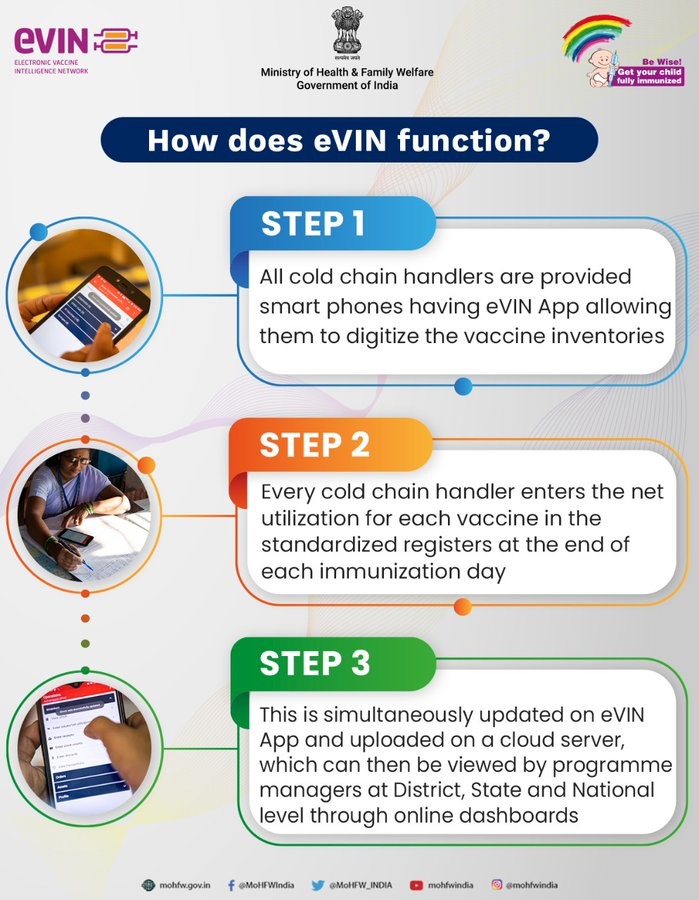
What were the Hurdles in the path?
- Huge Population: India sustains a staggering 17·7% (1·39 billion) of the world’s population, and vaccine production has therefore been a challenge in the country. India’s biggest challenge is to mobilise the population to attend the inoculation sites.
- Additionally, vaccination centers could become superspreader locations in themselves, if authorities don’t efficiently administer and manage them.
- Vaccine Hesitancy: Vaccine hesitancy is a widespread challenge in India, fuelled by misinformation and mistrust, particularly in rural areas where 65·5% of the population resides.
- Logistical Issues: Challenge also has been faced in the logistics of dispensing the vaccine to the vast population and to remote locations. With just about 30,000 cold storage facilities scattered across the country, the numbers don’t add up.
- Digital Divide: The system of vaccination assumes universal access to the internet, smartphones, Aadhaar, OTP, English, and digital literacy. The reality is that in 2020, smartphone penetration rate in India was only around 42 percent, while the internet was accessible to 45 percent.
- Vaccine Shortage: While many countries approved a diverse basket of vaccines, India limited its official approvals to just two vaccines: Covishield and Covaxin. There were many instances of vaccine shortages all over the country.
Is this Enough?
- Partially immunized: Still, there remains a worrying gap between those who have received one shot and those fully immunized. Also, the presence of a huge number of unvaccinated people that offers a fertile ground for sustained transmission.
- India had earlier said it aimed to vaccinate all eligible adults by the end of the year, but experts say the current pace of the vaccination drive will need to increase to meet this goal.
- Fears of a mutant: If the virus becomes different or mutates, it changes the dynamics. India has borne the brunt of the Delta variant already, but things could escalate quickly if a new variant emerges – either from within the country or outside.
- Exhausted Workforce: The ongoing COVID crisis presents an added challenge, with health systems and health workers consumed and burnt out, leading to a crisis of its own.
- Vaccine Hesitancy: Hesitancy and the belief that one dose is enough have kept the numbers low. According to the World Health Organization, the three key reasons for vaccine hesitancy are a lack of confidence (in the vaccine itself or in the healthcare system), complacency, and difficulties in obtaining the vaccine (logistics).
- Covid-appropriate Behaviour: It is extremely important for the government and the people to realise that vaccination is just one weapon in the fight against Covid-19. Lack of Covid-appropriate behaviour can very quickly nullify these gains.
- Inequitable Access: Almost 70% of individuals live in rural areas, which have poor healthcare access and have witnessed disproportionately higher numbers of infections and deaths from COVID. Vaccination efforts have been anaemic in these locations, lagging 15% behind that of urban centres.
What more needs to be done?
- Work on Vaccine Hesitancy: To overcome rumours at the village level, the Government of India needs to take stringent actions to achieve mass awareness and vaccination. Village heads and community health workers could have a proactive role in organising culturally relatable campaigns in local languages.
- Pace-up: Looking at the emerging SARS-CoV-2 variants, the government should focus on maintaining a high vaccination pace and coverage with a double-dose of COVID-19 vaccine and a shorter time between doses so that high efficacy rates can be achieved.
- Maintain Equity: Pre-existing health inequities have been exposed and exacerbated by the COVID-19 pandemic. To clear up past wrongdoing and change these poor outcomes, efforts must be made to ensure that local, regional, national and global responses to COVID-19 have equity at the core of their design, so plans are inclusive of everyone, especially the marginalized.
- Confidence- building Measures: Inadequate investigations into deaths among people who were vaccinated raise questions about the government’s commitment to transparency, which can contribute to vaccine skepticism.
- Having a robust and equitable NFCS (no-fault compensation system) for COVID-19 vaccine injury would pre-empt product liability complaints against the government, and could build confidence and trust among citizens about government-initiated immunisation programmes. This could lead to a higher percentage of population getting vaccinated at the earliest.
Conclusion: As for now, it seems that the challenges with the “known knowns” (covid cases, hospitalisation, and effective management) are being dealt with, and India is transitioning through the “known unknowns” (managing vaccine logistics and unforeseen complications). The real test will lie in dealing with the “unknown unknowns” (short-term and long-term vaccine efficacy, capacity to control the pandemic, and boosting the economy and healthcare).
Question: India achieved a milestone of 1 Billion Covid-19 vaccines in just nine months. What are the strategies that clicked and what more needs to be done?
Sources:
- 1 billion doses: How India's Covid vaccine campaign compares to others
- India crosses 1 billion Covid vaccination mark, govt hails 'vaccine century'
- India crosses 1 billion mark in covid-19 vaccination
- West Asian press lauds India’s 1 billion Covid doses
- ONE BILLION DOSES: INDIA’S LEADERSHIP IN THE WORLD
- India's COVID-19 vaccination drive: key challenges and resolutions
- India’s challenges with covid-19 vaccination
- Challenges facing COVID-19 vaccination in India: Lessons from the initial vaccine rollout
- The challenges of India’s vaccination drive
- India vaccine brief - 8 May-final
- India’s COVID-19 vaccine drive is excluding millions of citizens
- 5 steps to 1 billion doses
- 100 crore Covid-19 doses in India: A reason for cheer, and the need to keep going
This Day in History - Battle of Agincourt
On 25th October 1415, the English army, led by Henry V, scored a decisive victory over the French at the Battle of Agincourt during the Hundred Years' War, paving the way for further English conquests and successes. The name the Hundred Years’ War has been used by historians since the beginning of the nineteenth century to describe the long conflict that pitted the kings and kingdoms of France and England against each other from 1337 to 1453. Two factors lay at the origin of the conflict: first, the status of the duchy of Guyenne (or Aquitaine)-though it belonged to the kings of England, it remained a fief of the French crown, and the kings of England wanted independent possession; second, as the closest relatives of the last direct Capetian king (Charles IV, who had died in 1328), the kings of England from 1337 claimed the crown of France.
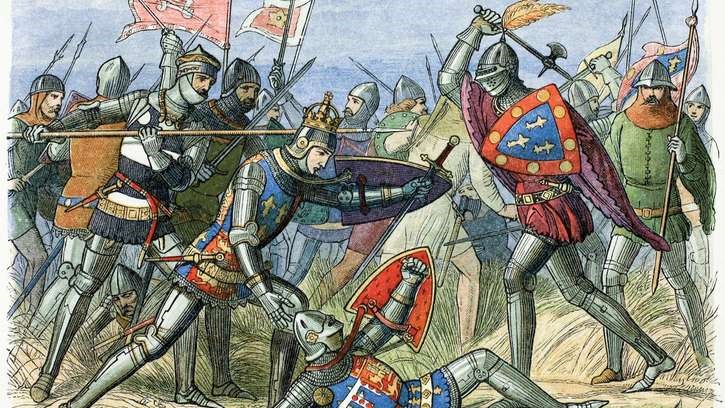
Sources:
Image of the Day - Micro snail species
This is image of a micro snail species named Georissa mawsmaiensis has recently been discovered from Mawsmai, a limestone cave in Meghalaya, 170 years after the last such discovery was made. It was in 1851 that Georissa saritta, a member of the same genus as the latest find, was collected and described from the Musmai (Mawsmai today) valley near Cherrapunjee by WH Benson. The members of the Georissa genus are widely distributed across and reported from Africa, Asia, and the Pacific. However, they are confined to microhabitats consisting of limestone caves or karst landscapes formed by the dissolution of limestone. Georissa is found in soil or subterranean habitats in lowland tropical forest as well as high altitude evergreen forests or on rock surfaces rich in calcium. The term ‘Mawsmai’ means ‘Oath Stone’ in the Khasi language. The Khasi people use the local term ‘Krem’ for the cave.
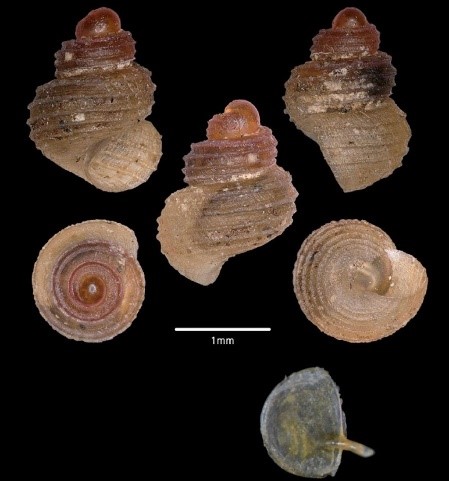
Source:
NPCI Tokenisation system
- Context: The National Payments Corporation of India (NPCI) has announced the launch of the NPCI Tokenisation system (NTS).
- NTS will support the tokenisation (sensitive customer data stored in the form of an encrypted ‘token’ for secure transactions) of RuPay cards as an alternative to storing card details with merchants.
- It is a fool-proof transparent system that not only ensures the safety of customer-sensitive information, but will also help in reducing friction in the payment process by providing a faster check-out experience to the customers.
- With the NTS, acquiring banks, aggregators, merchants, and others will be able to get themselves certified with the NPCI and function as the token requestor to help save the token reference number against all the card numbers saved.
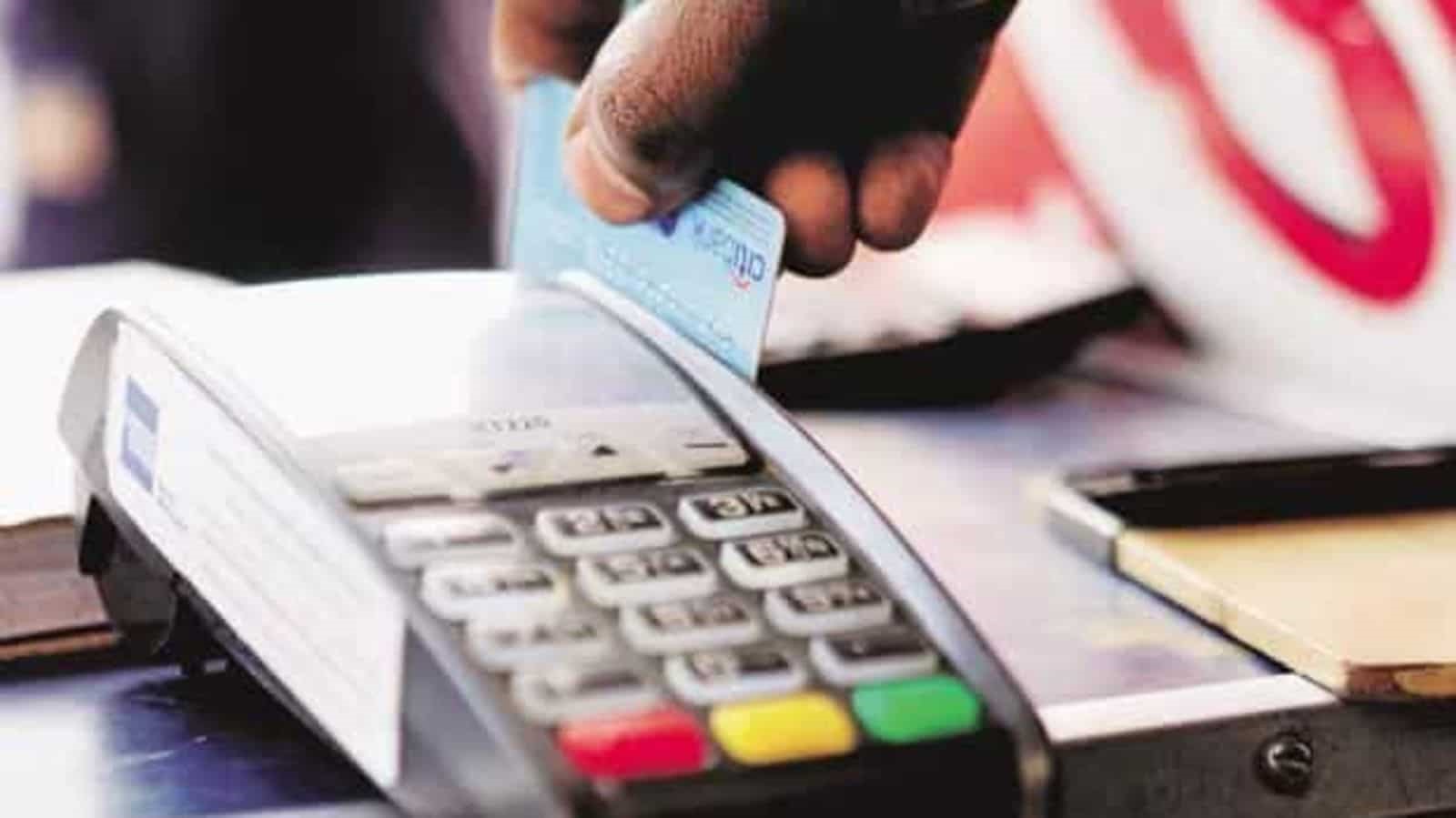
Sources:
- NPCI launches NTS platform for tokenisation of RuPay cards
- NPCI launches tokenisation platform for RuPay cards: How it will work
Image Source:
Climate TRACE
- Context: India has been ranked at the top in emissions related to crop burning, according to a report released by Climate TRACE.
- Climate TRACE (Tracking Real-time Atmospheric Carbon Emissions) is a global coalition of nonprofits, tech companies and universities.
- It was created to accelerate climate action by providing independent high-resolution and near-real-time (GHG) emissions data with unprecedented detail and speed
- It is built on the notion that “we can only manage what we can measure”.
- It harnesses satellite imagery and other forms of remote sensing, artificial intelligence, and data science expertise to identify human-caused GHG emissions when and where they happen.
- Its innovative approach fills critical knowledge gaps for all countries that rely on the patchwork system of self-reporting that currently serves as the basis for most existing emissions inventories.
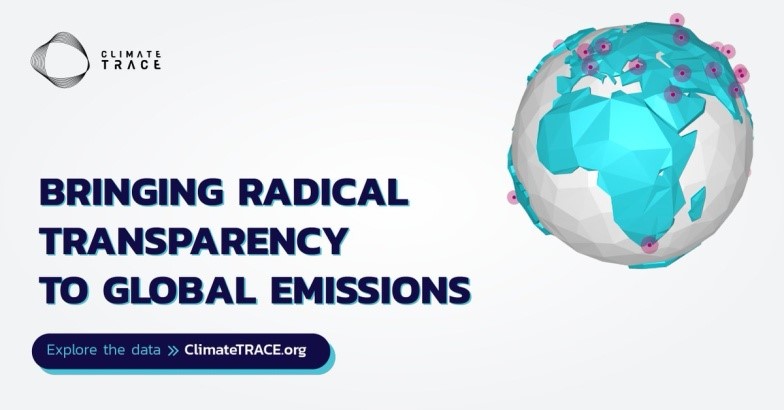
Sources:
- Climate TRACE
- India occupies top spot globally in emissions related to crop burning: Report
- Climate TRACE
Image Source:
Brimato
- Context: The Indian Council of Agriculture Research’s Indian Institute of Vegetable Research (ICAR-IIVR) in Varanasi has developed a technique to cultivate a plant that yields both brinjals and tomatoes named ‘Brimato’.
- Brimato was developed through dual or multiple grafting, in which two or more ‘scions’ (young shoot or twig of a plant, especially one cut for grafting or rooting) of the same plant family are grafted together to harvest more than one vegetable from a single plant.
- The parent plants of the Brimato are an enhanced brinjal hybrid known as ‘Kashi Sandesh’ and an improved variety of tomato ‘Kashi Aman’, which were grafted into the brinjal rootstock.
- Each Brimato plant can yield 3-4 kg brinjal and 2-3 kg tomato.
- Grafting is a technique of joining together plant parts by means of tissue regeneration. A portion of one plant is placed into or on a stem, root, or branch of another.
- This method will help meet nutritional and productivity challenges arising out of a lack of space for cultivation and also reduces costs and residual toxicity, with low chemical presence in crops.
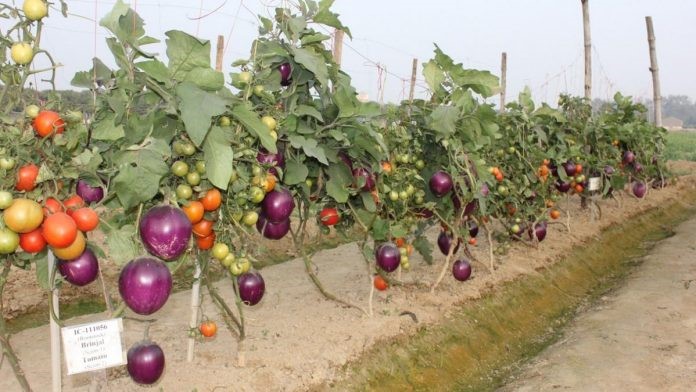
Sources:
- Is it brinjal or tomato? No, it’s ‘Brimato’, just like ‘Pomato’ grafted by Varanasi scientists
- Brimato: An Innovative Technology to produce Brinjal and Tomato in the same plant through Grafting
Image Source:
Bio-Enzymes from Kinnow
- Context: Farmers in Punjab, have started making Bio Enzymes (BE’s) from the fallen fruit- kinnow.
- Bio-enzymes are organic solutions produced through fermentation of organic waste such as fruits, vegetable peels and flowers, by mixing in sugar, jaggery/molasses and water.
- It takes 60-100 days to ferment organic waste and to fasten the process, yeast is used as culture.
- Kinnow is a year-long duration crop that is harvested during November-end to March.
- 15-20% (1.5 lakh to 2 lakh tonnes) of the total kinnow production falls from the tree before and during the harvesting period.
- This fallen fruit is a boon to improve soil its pH level, water, air, depleting ground water, water contamination and overall ecology. It also helps to prevent indiscriminate usage of chemical sprays of fungicides and bacterial diseases on crops and prepare bio-enzymes (BEs) at low cost.
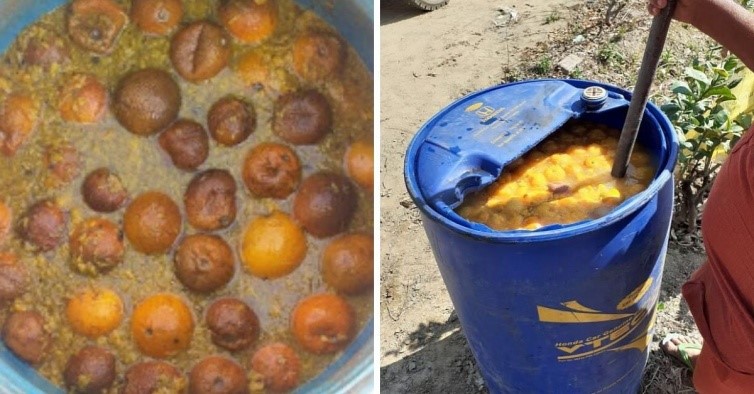
Source:
Image Source:
How Punjab can shine again with nutritional security and climate-friendly agriculture: IE
Essence: As per the Situation Assessment Survey (SAS) of agricultural households conducted by the National Statistical Office (NSO), Punjab and Haryana ranked at 2nd and 3rd position respectively in terms of highest income received by a farming household. However, they are earning higher incomes primarily because the size of their landholding is greater compared to other states. At the same time, there are issues of sustainability w.r.t. to soil and water in these states/
Their income on a per hectare basis needs to increase more sustainably and make its agriculture climate resilient. The article has suggested some methods to increase sustainability. Example, a five-year plan to shift at least a million hectares of paddy area to maize, creation of Maize corporation of Punjab, contracts with ethanol companies etc. Other diversification strategy includes increasing the area under fruits and vegetables, and building efficient value chains in fruits and vegetables, livestock, and fisheries.
Why should you read this article?
- To understand the sustainability issues with farming in Punjab and Haryana
- To understand methods to increase farming income and climate resilience of farming in these states.
Source:
India’s Central Asian outreach: TH
Essence: Dramatic developments in Afghanistan has created renewed challenges for India’s foreign policy in Central Asian region. The article elaborates on India’s contribution in the central Asian region and its importance. The article also stressed on the rising anti-Chinese sentiments within the region and security threats from the Taliban. These factors have created urgency for New Delhi and Central Asia to reimagine their engagement.
Central Asian countries have been keen to have India as a partner as they have sought to diversify their strategic ties. The author suggests that India should take a clue from Central Asian countries need to diversify their strategic ties and respond proactively to seize this opportunity.
Why should you read this article?
- To understand shared challenge of India and Central Asian countries after Taliban’s takeover of Afghanistan.
- To understand how India’s earlier attempts at deepening ties with central Asia failed
- To understand China-Pakistan axis which undermines India’s foreign policy interests.
Source:
In Glasgow, all eyes on 2030: TH
Essence: Ahead of the COP26 in Glasgow, there have been attempts to persuade countries to raise their emission reduction commitments from the Nationally Determined Contributions (NDC) under Paris Agreement, to restrict the temperature rise to well below 2°C” or the now de facto goal of 1.5°C above pre-industrial levels. Despite few positive outcomes, many high emitters are short of reduction targets of 2030.
The movement of Net Zero Emissions by 2050, which has gained momentum in the recent times is diverting attention from Common but differentiated responsibilities (CBDR). The developed countries should reach net zero earlier (2035-40) as they are responsible for 75% of GHG emissions.
For India to convert its ambitions of installing 450GW of renewable power by 2030, adding green hydrogen or increasing electric vehicles into commitments may require more work than done so far. COP26 must focus sharply on reducing emissions till 2030, rather than on net zero 2050, which is too distant a goal.
Why should you read this article?
To get a grasp of status of climate related needs and developments before COP-26 at Glasgow from India’s point of view.
Source:
Innovations are better when understood at grassroot level
Background
- Weeding (to root out or remove a weed or weeds), is an inevitable issue during cultivation, which requires labour force, which is quite expensive.
- But, Scarcity of labour is also a pertinent issue of agriculture.
- High labour cost and irregular agricultural activities affect the productivity of crops.
Understanding the problem for innovation
- Need for the Innovation: The practise of organic farming involves abundant use of natural fertilisers, which leads to unwanted weed growth.
- What was designed? Ashok Jadhav, a 71-year-old farmer innovated a weeder for successful weeding, without much labour input.
- The device requires manually pulling out the weeds, and the metal wire cuts them by the root.
- How was it designed? When all techniques failed, Jadhav resorted to his past knowledge and understanding to make the weeder.
- Benefits of the Innovation: This innovative weeder saves time as well as resources as the technique is cost effective and do not need much interventions.
- The tool worked and made it accessible to remove the weeds in congested crops and minor gaps.

Quote:
Innovation is taking two things that exist and putting them together in a new way.“- Tom Freston
Source:
Share the article
Get Latest Updates on Offers, Event dates, and free Mentorship sessions.

Get in touch with our Expert Academic Counsellors 👋
FAQs
UPSC Daily Current Affairs focuses on learning current events on a daily basis. An aspirant needs to study regular and updated information about current events, news, and relevant topics that are important for UPSC aspirants. It covers national and international affairs, government policies, socio-economic issues, science and technology advancements, and more.
UPSC Daily Current Affairs provides aspirants with a concise and comprehensive overview of the latest happenings and developments across various fields. It helps aspirants stay updated with current affairs and provides them with valuable insights and analysis, which are essential for answering questions in the UPSC examinations. It enhances their knowledge, analytical skills, and ability to connect current affairs with the UPSC syllabus.
UPSC Daily Current Affairs covers a wide range of topics, including politics, economics, science and technology, environment, social issues, governance, international relations, and more. It offers news summaries, in-depth analyses, editorials, opinion pieces, and relevant study materials. It also provides practice questions and quizzes to help aspirants test their understanding of current affairs.
Edukemy's UPSC Daily Current Affairs can be accessed through:
- UPSC Daily Current Affairs can be accessed through Current Affairs tab at the top of the Main Page of Edukemy.
- Edukemy Mobile app: The Daily Current Affairs can also be access through Edukemy Mobile App.
- Social media: Follow Edukemy’s official social media accounts or pages that provide UPSC Daily Current Affairs updates, including Facebook, Twitter, or Telegram channels.

